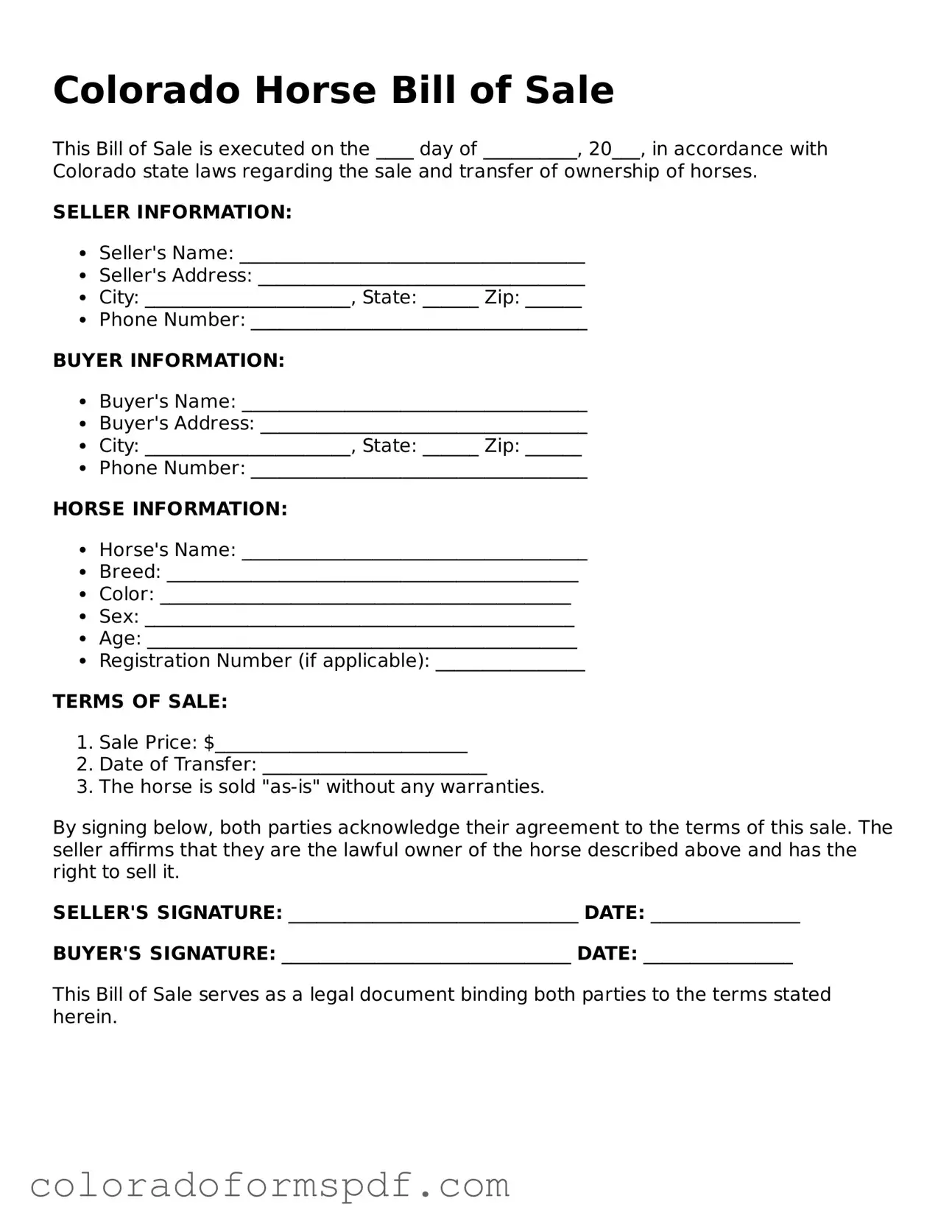Official Horse Bill of Sale Template for Colorado State
The Colorado Horse Bill of Sale form is a legal document that records the transfer of ownership of a horse from one party to another. This form serves as proof of the transaction and outlines important details such as the horse's description, sale price, and the identities of both the buyer and seller. Understanding this form is essential for ensuring a smooth and legally binding sale process in Colorado.
Get Document Online
